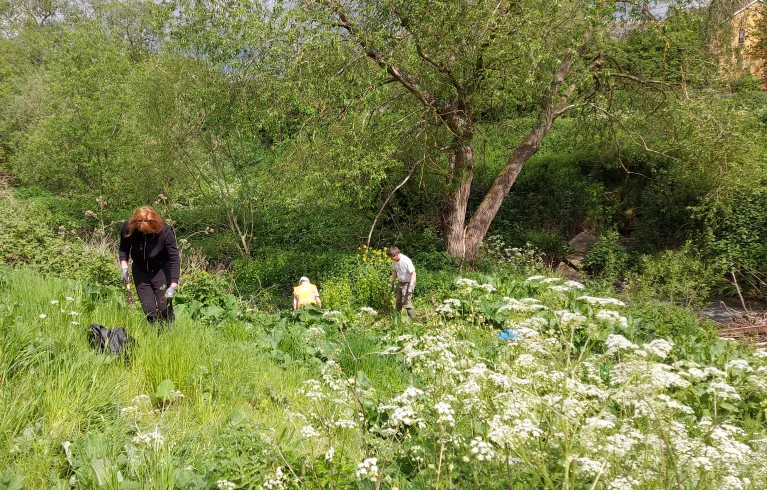
Biodiversity Improvements in King George's Park
Funding overview
- Organisation name: Enable Culture and Leisure
- Project name: Biodiversity Improvements in King George's Park
- Rewild London grant awarded: £46,460
- Total project cost: £58,577
- Area: Wandsworth
- Project aim: To improve biodiversity by creating wildflower meadows
About the project
The rewilding work at King George’s Park in Wandsworth included the creation of new wildflower meadows and improvements to the woodland.
Before the project took place, the grass in the park was cut with a mower and left uncollected so the nutrients could return to the soil. This technique encourages growth, so the grass needs to be cut every 3 weeks or so. To create a wildflower meadow area, the nutrient levels in the soil need to be low. This lets the seeds germinate and reduces the amount of grasses competing with the wildflowers. To allow this to happen, two areas within the park were chosen as wildflower meadow sites, and were fenced off.


The project used shire horses to mow, rake and rotavate these areas. This helped to create small gaps in the grass, so the wildflower seeds could take root. The horses were low-carbon compared to a mower, and they were also used to engage the community.
Alongside the meadows, the park benefitted from the planting of native trees and shrubs, and the creation of stag beetle loggeries will increase biodiversity.
Impact on London's environment
In the first full growing year, the diversity of the meadow areas was lower than the project team hoped. We think this was because of the dominance of tall grasses.
Changing the grass management approach before the project started would have allowed the nutrients in the soil to decrease. This would probably have improved the germination rate of the seeds.
Overall, the project improved 1.25 hectares of woodland and grassland which act as crucial corridors for pollinators, such as wild bees and butterflies.
As the park is adjacent to an urban river, and part of an area prone to flash flooding, this project will also help slow water flow during periods of high rainfall.
Key learnings
-
The transition from a grassed area to a biodiverse meadow can be slow.
-
Future projects to create wildflower meadows on grassland should take into account that good quality ongoing cut-and-collect management (rather than cut-and-drop) is needed to decrease nutrients in the soil.
-
Projects should also consider multiple rounds of scraping or scarification and seeding to ensure the success rate of planting remains high.
Need a document on this page in an accessible format?
If you use assistive technology (such as a screen reader) and need a version of a PDF or other document on this page in a more accessible format, please get in touch via our online form and tell us which format you need.
It will also help us if you tell us which assistive technology you use. We’ll consider your request and get back to you in 5 working days.